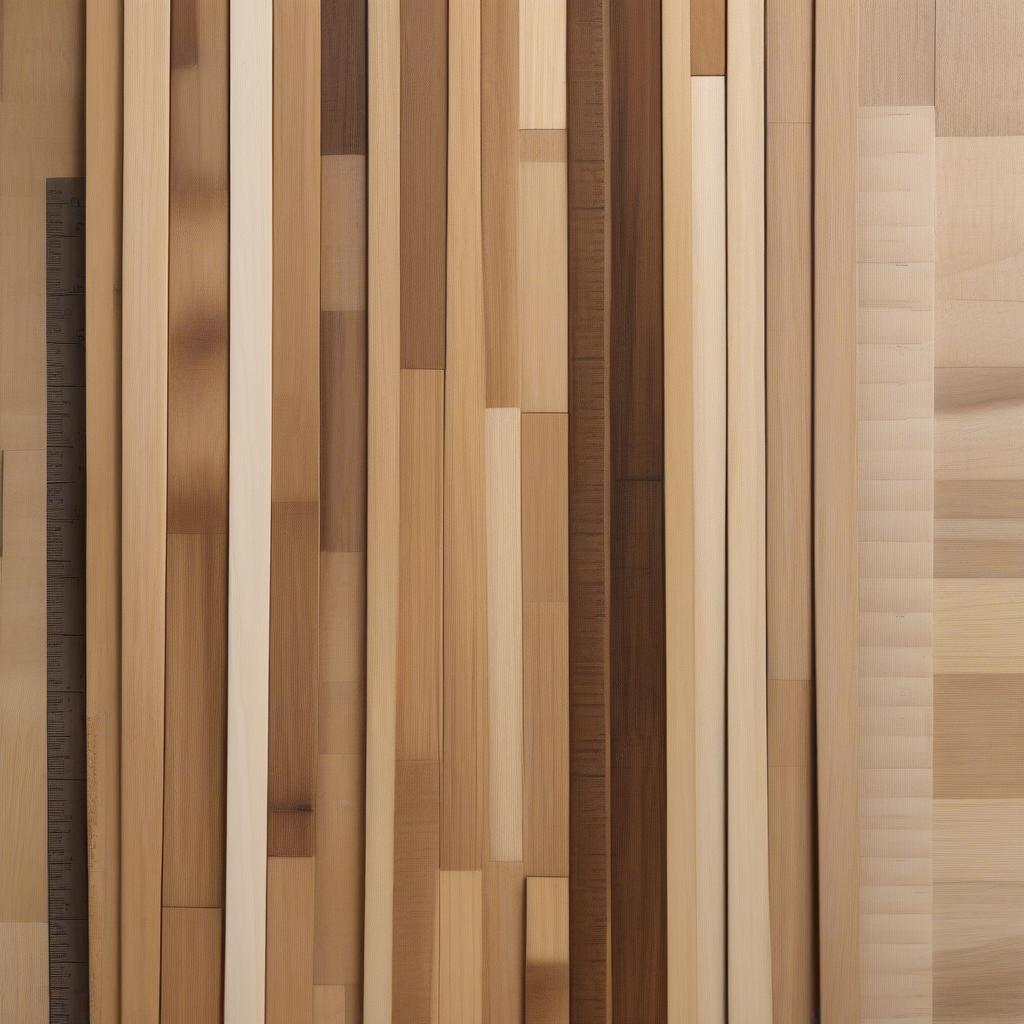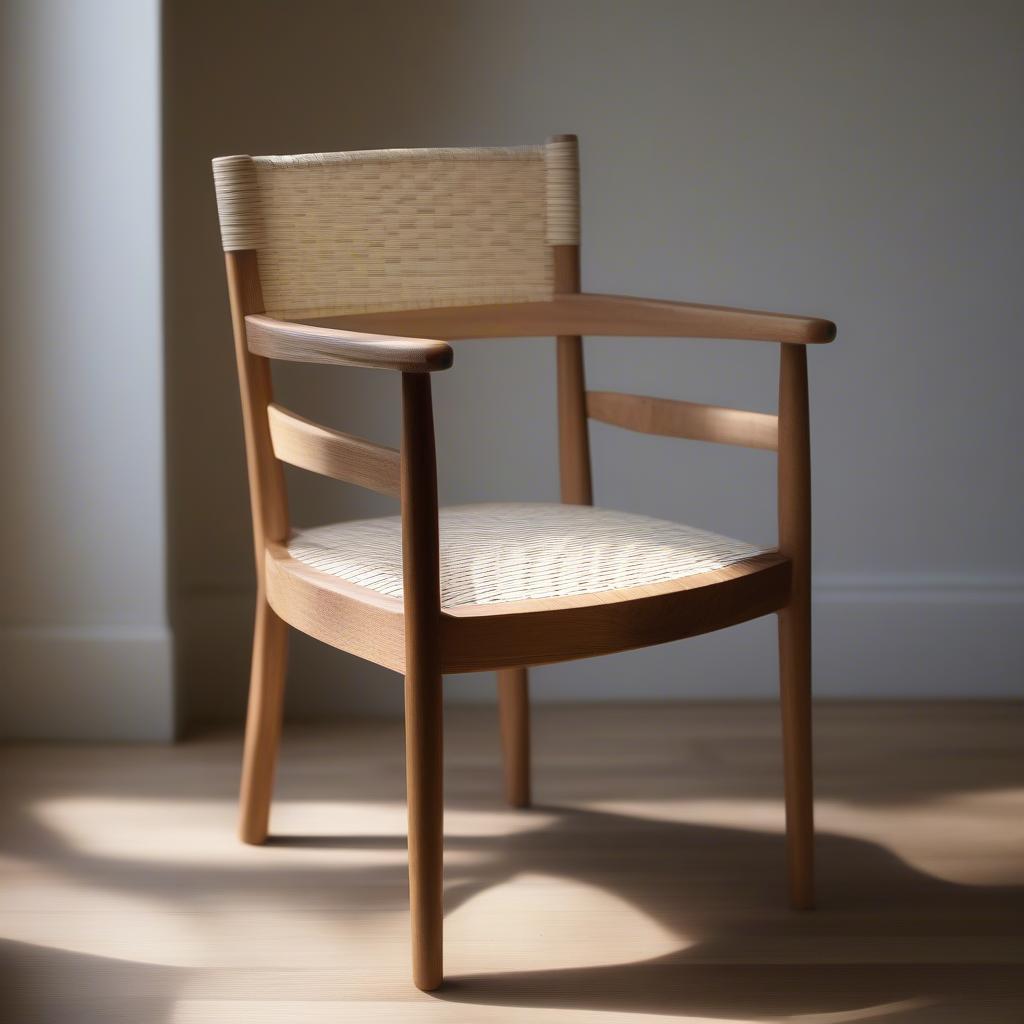Weave Chair
Hickory Strips for Re-Weaving Chair Bottoms
Re-weaving a chair bottom with hickory strips can bring new life to a cherished piece of furniture. Whether you’re dealing with a family heirloom or a flea market find, understanding how to choose and use hickory strips is crucial for a successful restoration. This guide will explore everything you need to know about Hickory Strips For Re-weaving Chair Bottoms, from selecting the right materials to mastering the weaving techniques.
Choosing the Right Hickory Strips for Your Chair
Selecting the appropriate hickory strips is the first step towards a beautifully re-woven chair bottom. Consider the width and thickness of the strips in relation to the existing holes or slots in your chair frame. Using hickory strips that are too thick can cause splitting, while strips that are too thin may not provide adequate support.
- Width: Measure the existing cane or rush seat to determine the appropriate width for your hickory strips. Common widths range from 1/4 inch to 1/2 inch.
- Thickness: The thickness should be consistent with the original weaving material and the chair’s structural integrity. A common thickness is 1/8 inch.
- Quality: Look for hickory strips that are free of knots, splits, and other imperfections. The strips should be pliable and easy to bend without breaking.
 Hickory Strips Width and Thickness
Hickory Strips Width and Thickness
Preparing Your Chair for Re-Weaving
Before beginning the re-weaving process, carefully remove any remaining old cane, rush, or other material from the chair frame. Clean the frame thoroughly to ensure a smooth surface for the new hickory strips. This preparation will create a better foundation for your weaving and ensure a more professional finished product.
- Remove Old Material: Use pliers and a utility knife to carefully remove any remnants of the old weaving.
- Clean the Frame: Use a damp cloth to remove dust and debris. Allow the frame to dry completely before beginning the re-weaving process.
- Inspect for Damage: Check the chair frame for any cracks or weaknesses. Repair any damage before proceeding.
Weaving Techniques with Hickory Strips
Several weaving patterns can be achieved with hickory strips, from simple over-under weaves to more intricate designs. The chosen pattern will depend on the chair’s style and your personal preference. Practice on a small piece of wood before tackling the entire chair bottom to familiarize yourself with the chosen technique.
- Over-Under Weave: This basic weave is ideal for beginners and creates a classic, timeless look.
- Diagonal Weave: This pattern adds a touch of visual interest and can be achieved by alternating the direction of the hickory strips.
- Basket Weave: This more complex weave involves interlacing multiple strips to create a woven basket effect.
 Hickory Strip Weaving Patterns
Hickory Strip Weaving Patterns
Securing the Hickory Strips
Once the weaving is complete, it’s essential to secure the hickory strips to the chair frame. This can be done using tacks, staples, or glue, depending on the chair’s construction and the desired finish. Ensure the chosen method provides a secure hold without damaging the hickory strips or the chair frame.
- Tacks: Small tacks provide a discreet and easily removable fastening method.
- Staples: Heavy-duty staples offer a more permanent solution.
- Glue: Wood glue can be used for a strong bond, but it is less forgiving if mistakes are made.
Finishing Touches
After securing the hickory strips, trim any excess material and lightly sand the edges for a smooth, professional finish. Applying a sealant or varnish can protect the hickory strips from wear and tear and enhance their natural beauty.
 Finished Hickory Strip Chair Bottom
Finished Hickory Strip Chair Bottom
Conclusion
Re-weaving a chair bottom with hickory strips is a rewarding project that can restore the beauty and functionality of a treasured piece of furniture. By choosing the right materials, mastering the weaving techniques, and paying attention to the finishing touches, you can achieve professional-looking results and enjoy your revitalized chair for years to come. Remember to select high-quality hickory strips for re-weaving your chair bottom for the best results.
FAQ
-
Where can I buy hickory strips for chair caning? Hickory strips can be purchased from online retailers, craft stores, and woodworking supply shops.
-
What is the best width for hickory strips? The ideal width depends on the chair’s design and the size of the existing holes.
-
How do I prevent hickory strips from splitting? Soak the strips in water before weaving to increase their flexibility and reduce the risk of splitting.
-
Can I stain hickory strips? Yes, hickory strips can be stained to match the chair frame or create a custom look.
-
How long does it take to re-weave a chair bottom with hickory strips? The time required depends on the chair’s size, the complexity of the weaving pattern, and your experience level.
-
What tools do I need for re-weaving with hickory strips? Essential tools include pliers, a utility knife, a hammer or staple gun, scissors, and sandpaper.
-
How do I care for a chair with a hickory strip bottom? Avoid exposing the chair to excessive moisture or direct sunlight. Dust regularly with a soft cloth.
Suggested further reading:
- Chair Caning Basics
- Advanced Weaving Techniques with Natural Materials
- Choosing the Right Materials for Chair Restoration
Need Help?
Contact our 24/7 customer service team at Hotline: +84 388 951 999, or visit our offices at Hanoi, Vietnam or Tech Avenue, Suite 12, San Francisco, CA 94105, USA.
